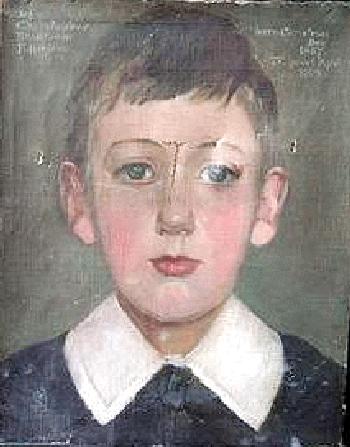
Figure 1.--This portrait of John Christopher Bradshaw Falleglove was probably painted in 1898. He looks to be about 12 years old. John wears the Eton collar that was was so common at turn of the century England.

Some interesting details are available on specific families as well
as articles from fashion magazines. We have also added some historical accounts as well as published memoirs. We have also included named portraits, even though there is often little information available. HBC's English readers are encouraged to provide HBC information about their personal experiences or historical accounts with which they are familiar. These personal accounts add greatly to the other informnation HBC has garnered from fashion magazines, catalogs, and available images. Often the personal perspective is not avialable from these other sources. Thus these personal accounts are a very important part of HBC.
HBC has collected details on a number of English boys during the 1890s. Boys wore kilts, Fauntleroy suits and sailor suits. Of course the sailor suit was most preferred. The Eton collar was widely worn by school boys and for dress occasions. Younger boys wore dresses and some boys wore smocks. The Llewyn-Davis Boys were of course imortalized in Lewis Carol's Peter Pan.
Lucy M. Boston (her married name) published a fascinating autobiography describing her childhood and youth. The autobiography is Perverse and Foolish: A Memoir of Childhood and Youth (Atheneum, New York, 1979). It contains some intriguing photographs and interested incidents that she and her brothers and sisters experienced
in Edwardian turn-of-the-century England. The book covers the period from the 1890s to the 1920s. There are also some interesting insights into nursery life.
Alfred Sassoon had three sons, Siegrried (b 1885), Michael (b. 1886), and Hamo (b. 1887).
The photograph shows the boys and their father about 1895, several months before
Alfred's untimely death, Alfred and his wife were estranged. He spent most his time in
London where he was having an affair.
John Ronald Reuel Tolkien (1892-1973) of Hobbit fame remarks in his autobiography that he and his younger brother Hilary wore dresses and long hair until about 6
years of age. At about this age they moved to a rural area and were exposed to village children. The village children, who apparently were not used to seeing boys their
age in dresses and curls, referred to them as "wrenches", a term they were unfamilar with. I don't think they were allowed to play with these village children, however.
Perhaps the most beloved literary characters of all time is Peter Pan. The story was written by J.M. Barie and first presented on stage in 1904. Published versions of the book delighted children and movie versions, especially the Disney version, brougt Peter into the lives of children all over the world. Barie developed the story in the process of telling stories to the children of a family he met in Kensington Gardens, the Llewellyn-Davies boys.
Peter is in fact named after one of the boys, Peter. The ways the boys were dressed provide a glimpse of how some affluent English boys were dressed at the turn of the century. Both parents died when the boys were still quite young. The story of the boys as adults is also very sad.
We know little about John, but a portrait shows a very English face and he wears the Eton collar that was was so common at turn of the century England. The portrait reads, "John Christopher Bradshaw Falleglove born on Chrismas day, 1887. The second date reads ij...poix April 1898." The word before April is very hard to read I will tell you what I get J (then three dots) poix or pox. I believe this is a portrait of a child who died in 1898. Presumably the portrait was made in 1898. The portrait is unsigned. It is a captivating portrait, but done by a naive or unschooled artist. This suggests that the boy did not come from a wealthy family, but the fact that a portrait was done suggests that they probably came from a middle-class family.
Navigate the Boys' Historical Clothing Web Site:
[Return to the Main English personal experience page]
[Introduction]
[Activities]
[Bibliographies]
[Biographies]
[Chronology]
[Clothing styles]
[Countries]
[Essays]
[Contributions]
[FAQs]
[Glossary]
[Satellite sites]
[Tools]
[Boys' Clothing Home]
